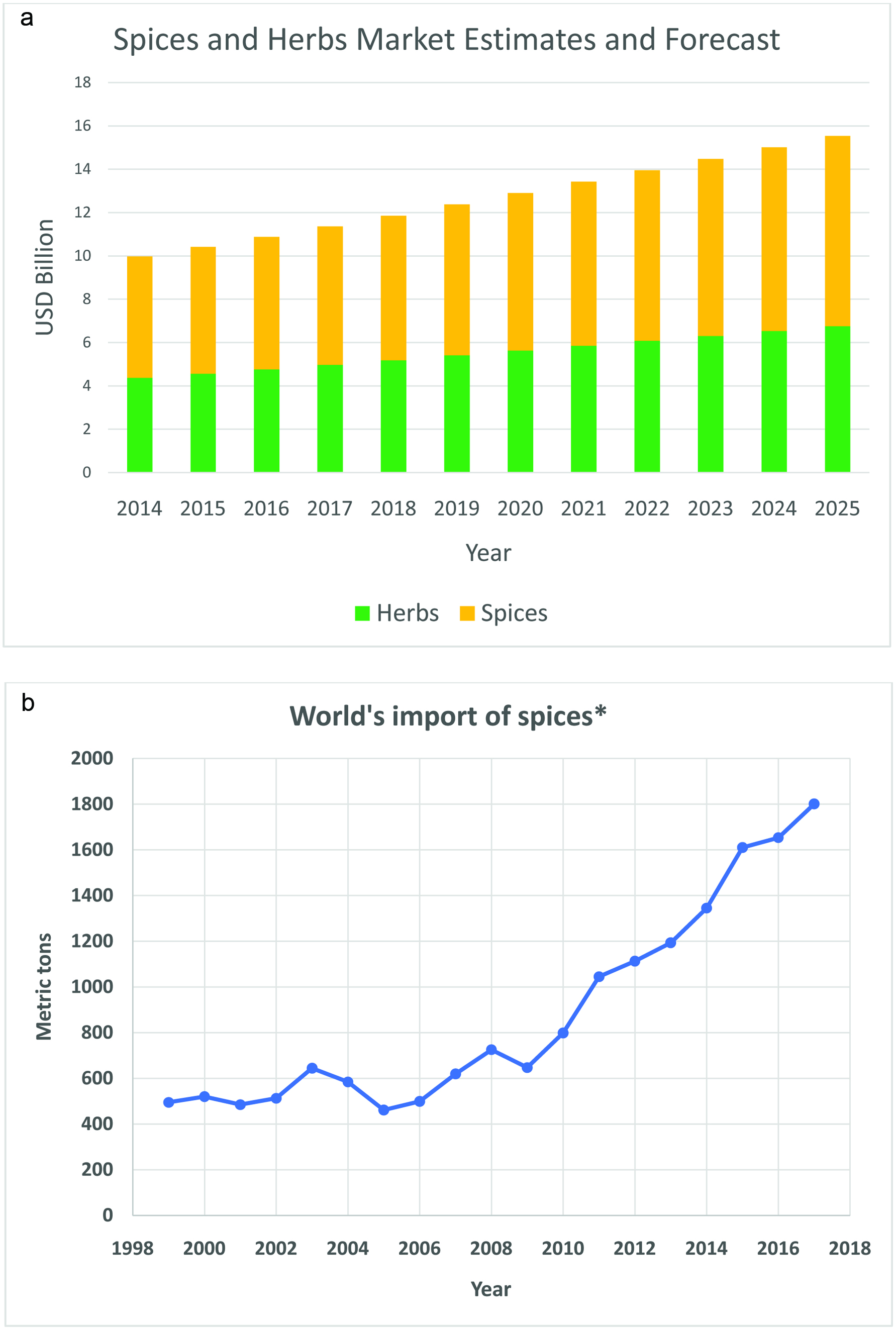
Figure 1. (a) Spices and herbs global market estimates and forecast (Varma, 2019); (b) World’s import of spices (Source: USDA, www.fas.usda.gov).
| Journal of Food Bioactives, ISSN 2637-8752 print, 2637-8779 online |
| Journal website www.isnff-jfb.com |
Review
Volume 6, June 2019, pages 68-99
Bioactives from culinary spices and herbs: a review
Figures

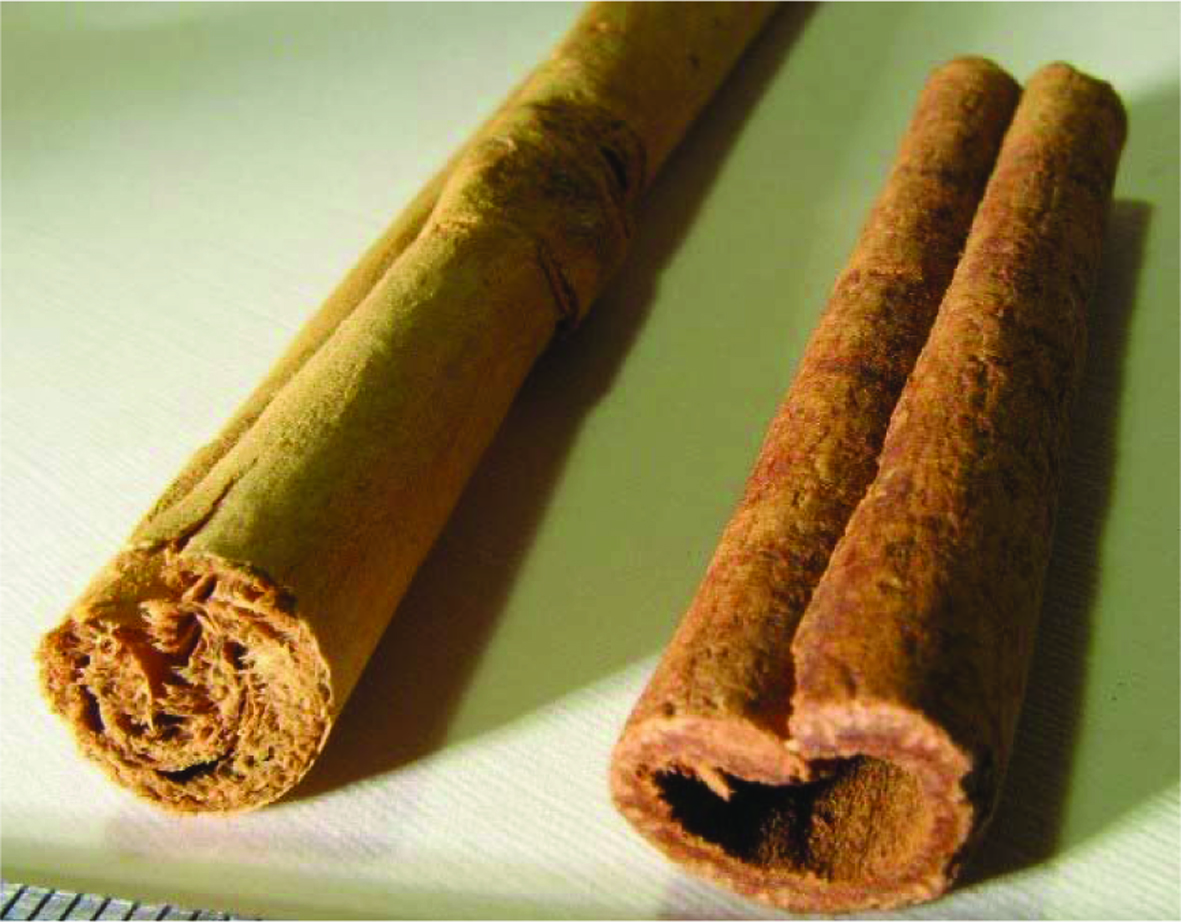
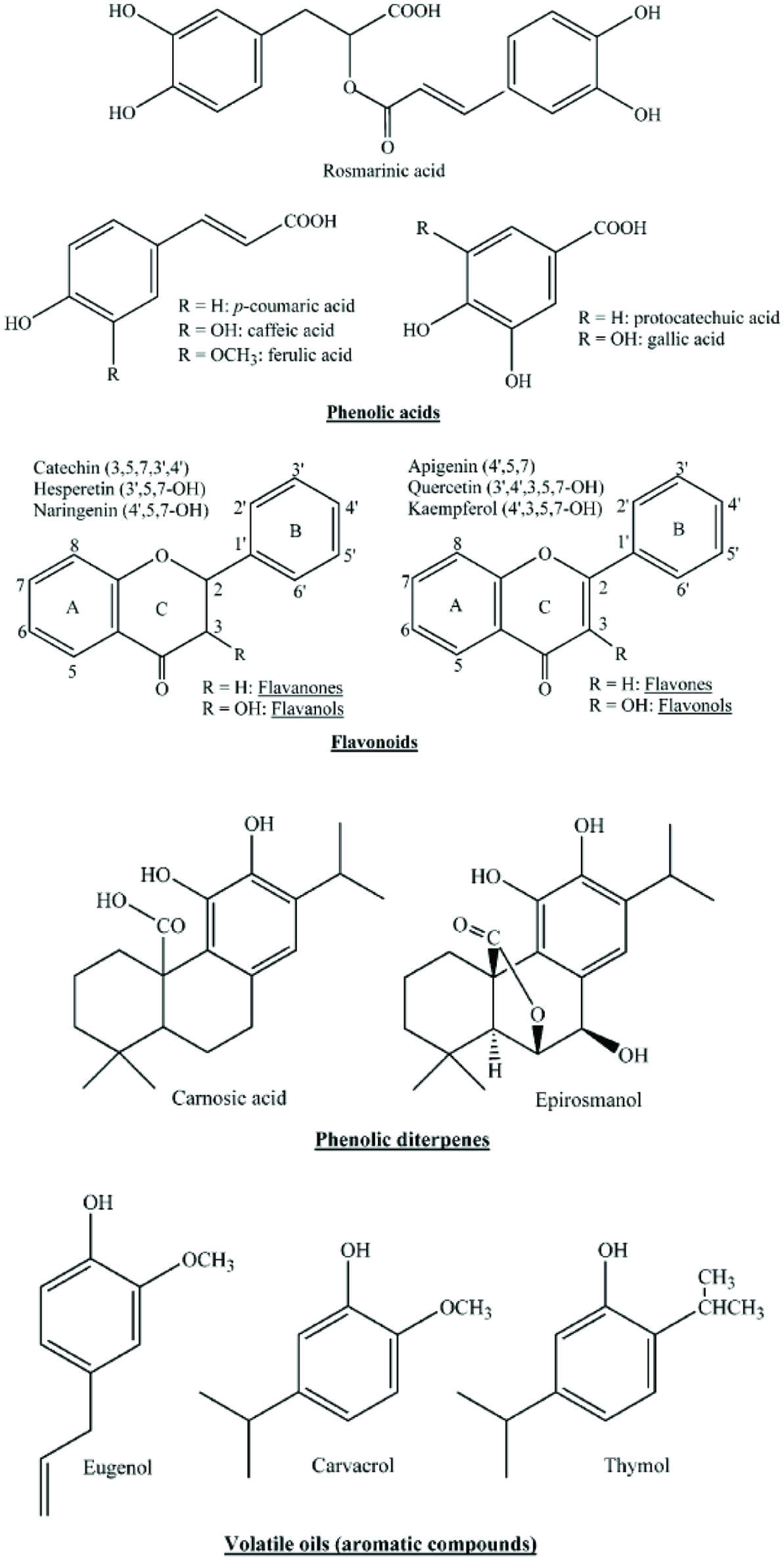
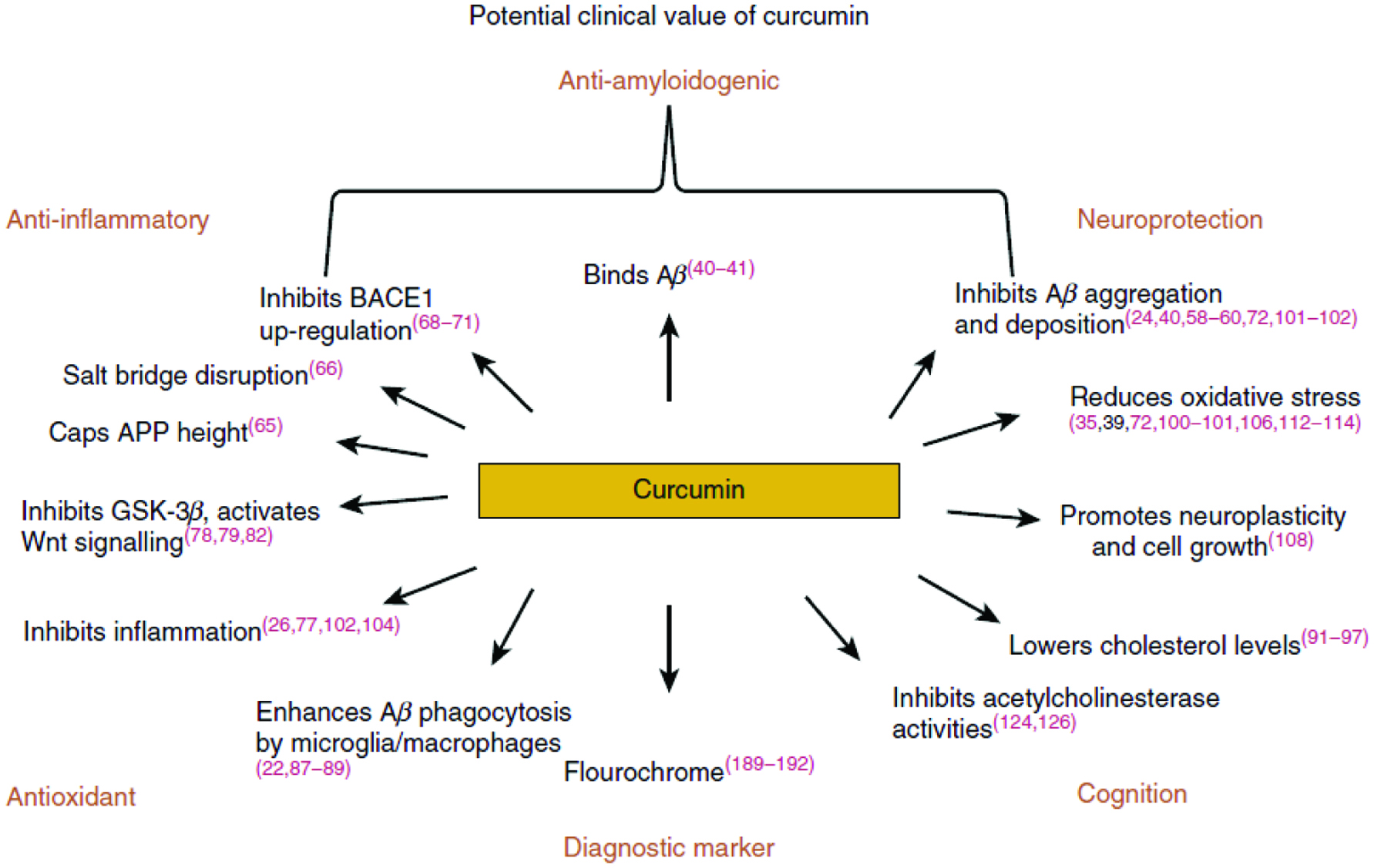
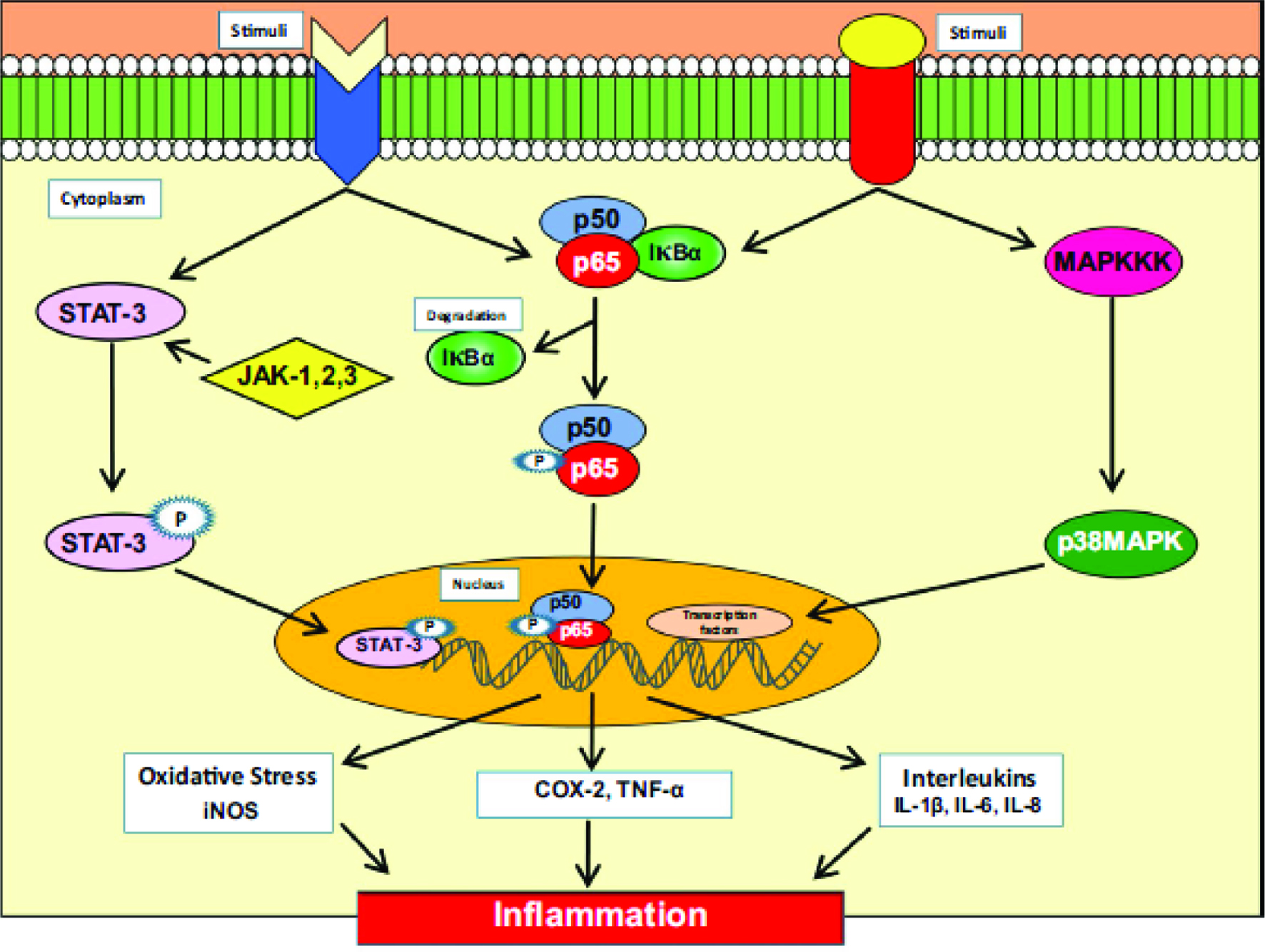
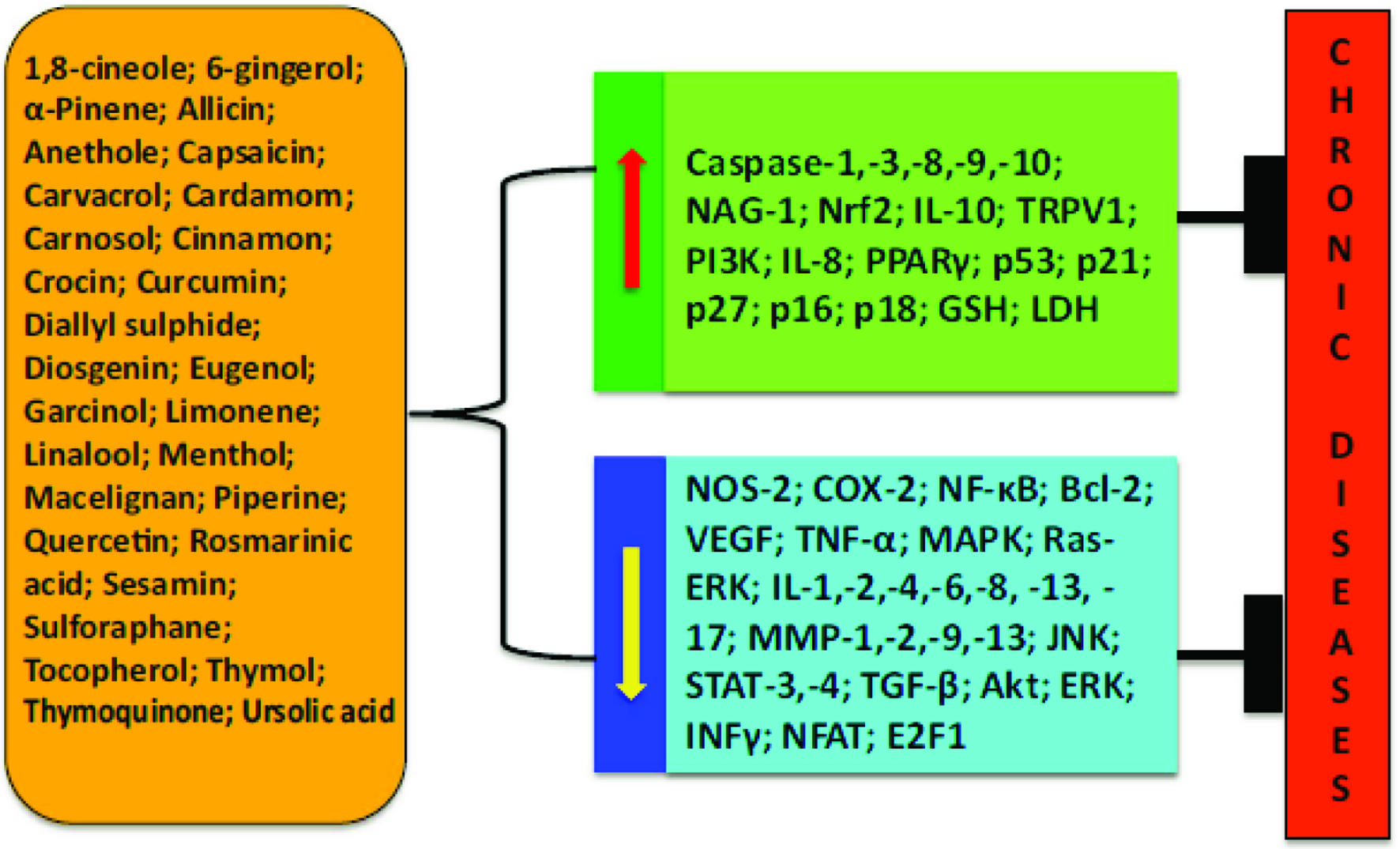
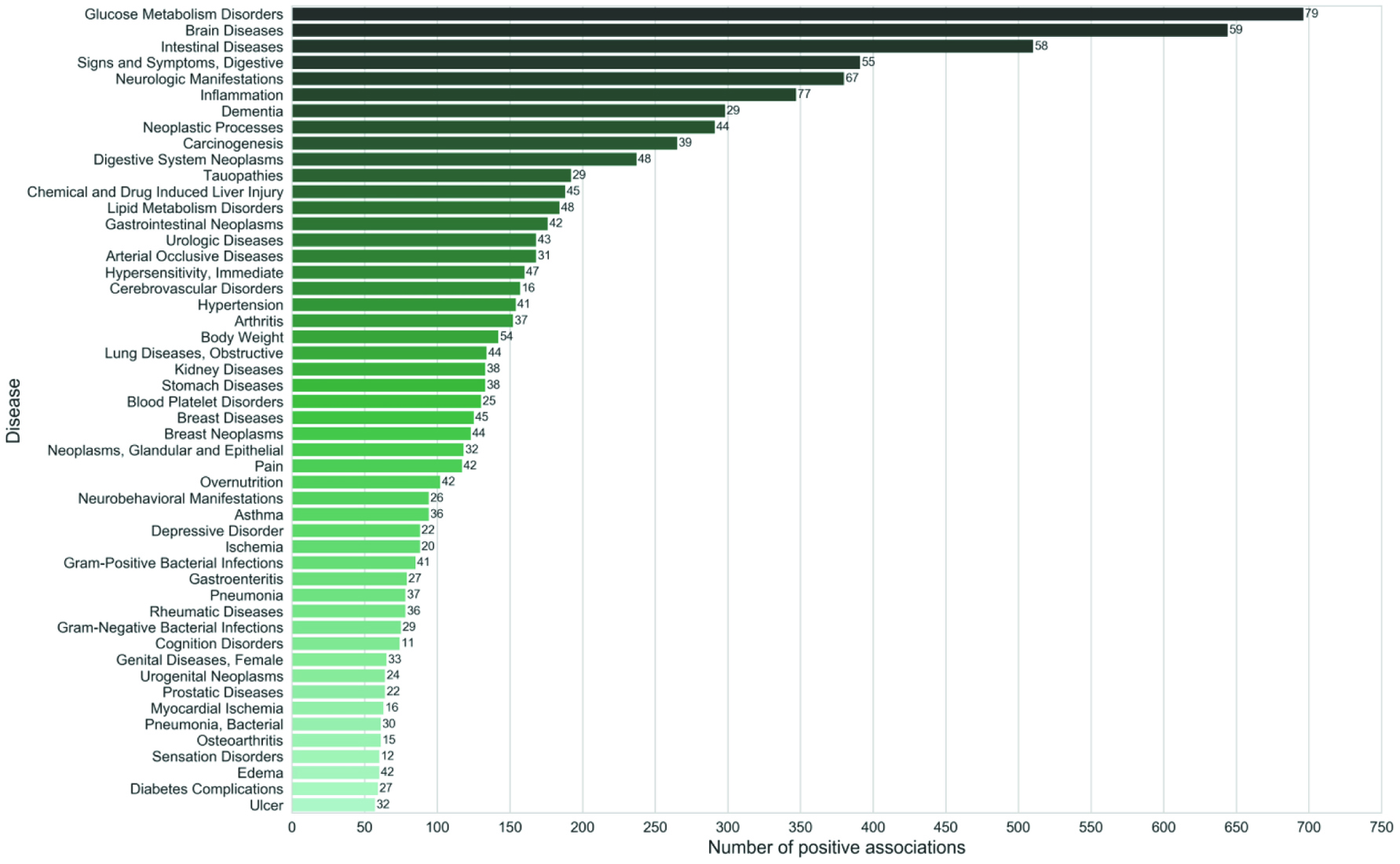
Tables
| Class | Bioactives | Food source | Health benefit | Reference |
|---|---|---|---|---|
| Carotenoids | Pro-vitamin A carotenoids: α-carotene, β-carotene, β-cryptoxanthin Non-provitamin A carotenoids: lycopene, lutein, zeaxanthin, astaxanthin | Carrots, tomatoes, spinach, maize, citrus, potatoes, pumpkins, yellow and red peppers, carrots, apricots, cantaloupe, collard greens, kale, sweet corn, turnip green, persimmon, egg yolk, green peas, Brussel sprouts, peaches, apricots, salmon, shrimp, trout, lobster, fish eggs, avocado | Antioxidant, antioxidants trapping free radicals, source of Vitamin A, enhance functioning of immune system, help reproductive system properly function, antiproliferative, anticancer, prevention of cardiovascular disease, maintains healthy eyes, prevention of colon cancer, prevention of macular degeneration | Rao and Agarwal, 2000; Burri, 2000; Delgado-Vargas et al., 2000; Handelman, 2001; Krinsky, 2001; Scheerens, 2001; Young and Low, 2001; Seo et al., 2005; Ottaway, 2008; Wang and Bohn, 2012; Watson and Preedy, 2012 |
| Dietary lipids | Omega-3 α-linolenic acid (ALA), eicosapentaenoic acid (EPA), docosahexaenoic acid (DHA), conjugated linoleic acid (CLA) | Flaxseed, vegetable oils, nuts, salmon, cow’s milk, meat | Joint and cardiovascular health, anti-inflammatory, lipid- lowering | Keys and Parlin, 1966; Hu et al.,1989; Harris et al., 2009 |
| Plant sterols | Sitosterol, campesterol, stigmasterol | Nuts, seeds, whole grains, legumes | Low density lipoprotein (LDL) blocking, cholesterol reducing (total and LDL), competitively inhibit cholesterol intestinal uptake | Maki and Rains, 2001; Maki et al., 2001; Richelle et al., 2004; Devaraj et al., 2006; Jimenez-Escrig, 2006; McKenney et al., 2012; Maki et al., 2013 |
| Polyphenols | Phenolic acids, anthocyanins, flavonols, flavones, flavonoids, flavanones, isoflavones, flavonones, catechin, epicatechin | Legumes, fruits, vegetables, red wine, chocolate, green tea, olive oil and fruit oil, bee pollen, cereal grains and seeds, soybeans, spices and herbs, cider, potato, miso, tofu, tempeh, | Antioxidant and cardiovascular benefits, lipid- lowering, immunomodulator, anticancer, anti-estrogen, anti-osteoporotic, antiproliferative, lower risk of heart attack and stroke, anticarcinogenic activity, inhibit atherosclerosis, anti-inflammatory | Cassidy et al., 2013; Duenas et al., 2015; Cassidy et al., 2015; Cassidy et al., 2016; Krga et al., 2016; Tome-Carneiro and Visioli, 2016; Aryaeian et al., 2017; Espin et al., 2017; Fairlie-Jones et al., 2017; Milenkovic et al., 2017; Espin et al., 2017; Tang et al., 2017; Williamson, 2017; Zhao et al., 2017; Yashin et al., 2017; Cassidy, 2018; Garcia-Conesa et al., 2018 |
| Prebiotics | Lactobacilli, Fructo-oligosaccharides Resistant dextrin, maltodextrin and starch Galactooligosaccharide Fiber, dietary fiber | Inulin Processed starch | Lipid lowering, healthier human gut microbiota | Scheerens, 2001; Abrams et al., 2005; Depeint et al., 2008; Worthley et al., 2009; Costabile et al., 2010; Robertfroid at al., 2010; Tzounis et al., 2011; Sarbini and Rastall, 2011; Dewulf et al., 2013; Goh and Klaenhammer, 2015; Bindels et al., 2015a; Bindels et al., 2015b; Simpson & Campbell, 2015; Shannahan, 2015; Vulevic et al., 2015; Hutkins et al, 2016; Delcour et al., 2016; Collins and Reid, 2016; Koh et al., 2016; Kulinich and Liu, 2016; Vandeputte et al, 2016; Verspreet et al., 2016 |
| Probiotics | Lactobacillus, bifidobacteria, yeasts | Cultured products, yogurt, kefir | Aids digestion, immune health benefits, Immunomodulators, anticancer, gastrointestinal health modulators | Holzapfel et al. 2001; Bouhnik et al., 2004; El-Nezami et al., 2006; Worthley et al., 2009; Rastall and Gibson, 2015 |
| Organosuplhur compounds | Allicin, diallyl sulphde, diallyl disulphide, diallyl trisulphide | Garlic, onion, leek, chive, scalion, shallot | Cholesterol lowering, anti-inflammatory, improved liver function, improved immunity, antimicrobial effect | Block et al., 1992; Block et al., 1993a; Block et al., 1993b; Block and Thiruvazhi, 1993; Block, 1994; Scheerens, 2001; Tapsell et al., 2006; Iciek et al., 2009; Vaidya et al., 2009 |
| Spices/herbs | Scientific name | Part of plant | Top producer |
|---|---|---|---|
| Tabulated based on information from UNIDO and FAO (2005). | |||
| Pepper | Piper nigrum | Berries | Indonesia (whole pepper); India (crushed/ground pepper) |
| Capsicums | Capsicum annuum var annuum; C. chinense; C. frutescen | Fruits | China |
| Nutmeg/mace | Myristica fragrans | Kernel of the seed; Net-like crimson leathery outer growth or aril | Guatemala |
| Cardamon | Elettaria cardamomum; E. major; E speciosa | Fruits | Guatemala |
| Allspice/pimento | Pimenta dioica | Berries | |
| Vanilla | Vanilla planifolia (Mexican); V. pompona (West Indies); V. tahitensis (Tahitian) | Beans | Madagascar |
| Cloves | Syzygium aromaticun | Buds | Indonesia |
| Ginger | Zingiber officinale | Rhizome | China |
| Cinnamon/cassia | Cinnamomum verum (Sri Lanka); C. cassia (China); C. burmannii (Indonesia); C. loureirii (Vietnam) | Bark | Sri Lanka (whole cinnamon); Indonesia (crushed/ground cinnamon) |
| Turmeric | Curcuma longa | Rhizome | India |
| Saffron | Crocus sativus | Stigma | Iran |
| Coriander | Coriandrum sativum | Fruit | Morocco, India |
| Cumin | Cumimum cyminum | Fruit | India, Syria, Turkey |
| Mustard | Sinapis alba (white mustard); Brassica juncea (Indian mustard) | Seeds | Syria |
| Sesame seeds | Sesamum indicum | Seeds | Nepal, Canada, Myanmar |
| Sage | Salvia officinalis | Leaf | Turkey |
| Oregano | Origanum vulgare | Leaf | Turkey |
| Thyme | Thymus vulgaris | Leaf | Iran |
| Bay leaf | Laaurus nobilis | Leaf | Iran |
| Mints | Mentha arvensis; M. spicata; M. gracilis | Leaf | India, China |
| Spice/Herb | Species | Common name | Description | Forms available in the market |
|---|---|---|---|---|
| Black pepper | Piper nigrum | black pepper, pepper | Black and round with rough surface about 2–3 mm in diameter | Whole, ground |
| White pepper | Piper nigrum | white pepper | White or off white and round about 2–3 mm in diameter; this is actually the black peppercorn which have been fermented and the black pericarp has been removed | Whole, ground |
| Chili pepper | Capsicum annuum | chile, chile pepper, chilli pepper, or chilli | Elongated fruit green when immature and turns to red, yellow, deep purple, orange in color when ripe depending on variety and used in dishes to add heat | Whole, fresh or dry chili pepper, dried flakes, crushed, powder |
| Cinnamon | Cinnamomum verum (C. zeylanicum); C. cassia Presl (C. aromaticaum); C. burmannii; C. loureirii Nees; C. tamala (Buch.-Ham.) Nees & Eberm | True or Ceylon cinnamon, Mexican cinnamon; Cassia, Chinese cinnamon; Indonesian cassia, Korintje cinnamon, Pandan cinnamon; Vietnamese cassia, Saigon cinnamon, Vietnamese cinnamon; Indian cassia | Very thin, light yellow brown smooth bark, less dense, more crumbly texture, highly fragrant aroma, more aromatic in flavor; Lower levels of coumarin (Figure 2); Much stronger and harsher flavor than Ceylon cinnamon, medium to light reddish brown, hard and woody, thicker bark (Figure 2) | Ground, stick, chips, extract |
| Fenugreek | Trigonella foenum-graecum | fenugreek | Small green oblong leaves with maple syrup smell | Dry, powder |
| Garlic | Allium sativum | garlic | Spear-shaped beige in color with pungent odor | Fresh, dry, powder, flakes, granules |
| Ginger | Zingiber officinale | ginger | Yellow fragrant rhizome | Fresh, dry, powder, flakes, granules |
| Rosemary | Rosmarinus officinalis L | rosemary | Fragrant needle-like green leaves from an evergreen plant | Fresh whole or dry leaf, crushed, powder, extract |
| Turmeric | Curcuma longa | turmeric | Deep orange yellow rhizome with a warm, bitter, hot and earthy flavor | Fresh, dry, powder, flakes, granules |
| Vanilla | Vanilla planifolia | vanilla | Long, greenish-yellow seed pods when harvested that turn to dark brown after curing | Vanilla beans, vanilla paste, vanilla extract, vanilla extract concentrate |
| Part of the plant | Spice/Herb |
|---|---|
| Leaves | Basil, oregano, bay leaf, thyme, tarragon |
| Bark | Cinnamon, cassia |
| Seed | Fennel, fenugreek, dill mustard |
| Flower/bud, pistil | Clove, saffron |
| Fruits/berries | Clove, chilli, black pepper, allspice |
| Bulbs | Onion, garlic, leek |
| Root | Ginger, turmeric |
| Aril | Mace |
| Angiospermae | |||||||||||||
|---|---|---|---|---|---|---|---|---|---|---|---|---|---|
| Monocotyledonae | Dicotyledonae | ||||||||||||
| Arachichlamydaeae | Sympetalae | ||||||||||||
| Orchidales | Scitamineae | Liliiflorae | Umbelliflorea | Myrtiflorae | Rhoeadales | Ranales | Piperales | Campalunatae | |||||
| Orchidaceae | Zingiberaceae | Iridaceae | Liliaceae | Umbelliferae | Myrtaceae | Cruciferae | Magnoliaceae | Lauraceae | Myristicaceae | Piperaceae | Compositae | Pedaliaceae | Solanaceae |
| vanilla | ginger, turmeric | saffron | onion, garlic | fennel, parsley, anise, caraway, celery, cumin, coriander | clove, allspice | mustard | Anise | cinnamon, cassia, bay leaf | nutmeg, mace | pepper, long pepper | tarragon, chicory | sesame | paprika, red pepper, chilli |
| Structural classes | Examples | Color | Spices and herbs |
|---|---|---|---|
| Flavanols | Quercetin, quercetin-3-O-rutinoside, myricetin, kaempferol, isorhamnetin, gingerol | White to yellow | Onions, ginger |
| Flavan-3-ols | Catechin, epicatechin, epigallocatechin, epigallocatechin gallate, proanthocyanidins | Mint basil, rosemary, sage, dill | |
| Flavones | Apigenin, luteolin, nobiletin, scutellarein, sinensetin, tangeretin, isoorientin, orientin | Celery, parsley, lemon grass | |
| Anthocyanidins and anthocyanins | Cyanidin, delphinidin, petunidin, peonidin, malvidin | Red, blue, purple, pink, mauve, violet | Red onions |
| Nonflavonoid phenolic compounds | |||
| Phenolic acids | Gallic acid, p-hydroxybenzoic acid, procatechuic acid, vanillic acid, syringic acid, ellagic acid, gallagic acid, punicalagin, gentisic acid | Cinnamon, clove, anise, dill, fennel, caraway, parsley | |
| Hydroxycinammic acids | p-coumaric, caffeic, ferulic, chlorogenic acid, curcuminoids, curcumin | Yellow | Ginger, cardamom, turmeric |
| Carotenoids | β-Carotene, lycopene, lutein, zeaxanthin | Yellow, orange, red | Mustard greens, cayenne pepper, chili pepper |
| Organosulfides, indoles, glucosinolates/sulfur compounds | Sulphoraphane, allyl methyl trisulfide, diallyl sulfide, indol-3-carbinol, sulforaphane, sinigrin, allicin, alliin, ally isothiocyanate, piperine | Garlic, onions, leeks, chives, shallots, mustard, black pepper, rutabaga, mustard green | |
| Aromatic herbs in the mint family Lamiaceae | Scientific name | Antioxidant compounds |
|---|---|---|
| Rosemary | Rosmarinus officinalis | Carnosal, 12-O-methylcarnosic, rosmanol, caffeic acid, rosmarinic acid, caffeoyl derivatives, phenolic diterpenes (carnosic acid, carnosol, epirosmanol, flavonoids, camphor, caffeic acid, ursolic acid, betulinic acid, 1,8-cineole |
| Basil | Ocimum basilicum | Eugenol, citral, citronellol, linalool, myrcene, pinene, ocimene, terpineol, linalyl acetate, trans-ocimene, 1,8-cineole, camphor octanane, methyl eugenol, methyl chavicol, beta-caryophylenne |
| Lavender | Lavandula angustifolia | Linalyl acetate, linalool, camphor, beta-ocimene, 1.8-cineole, borneol, hotrienol, hexyl butyrate, alpha-bisabolol, caryophyllene oxide |
| Marjoram | Origanum marjorana | Beta-carotene, beta-sitosterol, caffeic-acid, carvacrol, eugenol, hydroquinone, linalyl-acetate plant 3–17, myrcene, rosmarinic-acid, terpinen-4-ol |
| Oregano | Origanum bulgare | Caffeic acid, p-coumaric acid, rosmarinic acid, caffeoyl derivatives, cavacrol, flavonoids |
| Sage | Salvia officinalis | Rosmanol, epirosmanol, phenolic acids (rosmarinic acid), phenolic diterpenes (carnosic acid), flavonoids |
| Thyme | Thymus vulgaris | Phenolic acids (gallic acid, caffeic acid, rosmarinic acid), thymol, phenolic diterpenes, flavonoids |
| Spice/herb | Scientific name | Antioxidant compounds | Mode of action |
|---|---|---|---|
| *From various sources | |||
| Rosemary | Rosemarinus officinalis | Carnosol, carnosic acid, rosmanol, rosmadial, diterpenes (epirosmanol, isorosmanol, rosmaridipehnol, rosmariquinone, rosmarinic acid | Scavenge superoxide radicals, lipid antioxidant and metal chelator |
| Sage | Salvia officinalis L | Carnosol, carnosic acid, rosmanol, rosmadial, methyl and ethyl esters of carnosol, rosmarinic acid | Free radical scavenger |
| Oregano | Origanum vulgaris | Rosmarinic acid, caffeic acid, protocatechuic acid, 2-caffeoyloxy-3-[2-(4-hydroxybenzyl)-4,5-dihydroxy] phenylpropionic acid; flavonoids—apigen, eriodictyol, dihydroquercetin, dihydrokaempherol; cavacrol, tymol | Free radical scavenger |
| Thyme | Thymus vulgaris L | Thymol, cavacrol, p-Cumene-2,3-diol, Phenolic acids (gallic acid, caffeic acid, rosmarinic acid), phenolic diterpenes, flavonoids | Free radical scavenger |
| Ginger | Zingiber officinale | Gingerol. shogaol, zingerone | Free radical scavenger |
| Turmeric | Curcuma domestica L | Curcumins, 4-hydroxycinnamoyl methane | Free radical scavenger |
| Black pepper | Piper nigrum L | Kaempherol, rhamnetin, quercetin | Free radical scavenger |
| Chili pepper | Capsicum frutescence L | Capsaicin, capsaicinol | Free radical scavenger |
| Clove | Eugenia caryophyllata | Phenolic acids (gallic acid), flavonol glucosides, phenolic volatile oils (eugenol, acetyl eugenol, isoeugenol), tannins | Free radical scavenger, metal chelator |
| Marjoram | Majorana hortensis | Beta-carotene, beta-sitosterol, caffeic-acid, carvacrol, eugenol, hydroquinone, linalyl-acetate plant 3–17, myrcene, rosmarinic-acid, terpinen-4-ol | Free radical scavenger |
| Cumin | Cumimum cymimum | Cuminal, γ-terpinene, pinocarveol, linalool, 1-methyl-2-(1-methylethyl)benzene, carotol | Free radical scavenger, metal chelator |
| Bioactive compounds | Sources | Potential mechanisms | References |
|---|---|---|---|
| 1,8-Cineole | Basil, Cardamom Sage | - Shown to downregulate NOS-2, COX-2 and NF-kB, modulate inflammatory pathways (TNF-α, COX-2, NF-κB, IL-1β, among others) | Santos et al., 2001; Iacobellis, 2005; Aggarwal et al., 2009; Khan et al., 2014; Juergens, 2014 |
| 6-Gingerol | Ginger | - Can induce downregulation of inflammatory cytokines such as monocyte chemoattractant protein-1 (MCP-1), TNF-α, and IL-6, and NF-κB - Can inhibit the activity of TNF-α and VEGF - Can promote cell apoptosis in human colorectal cancer cells via the upregulation of nonsteroidal anti-inflammatory drug (NSAID)-activated gene-1 (NAG-1) | Surh, 1999; Tzeng et al., 2015; Dongare et al., 2016; Serafini and Peluso, 2016 |
| α-pinene | Rosemary | - Found to suppress MAPKs and NF-κB pathway - Downregulation of TNF-α, IL-1β, and IL-6 | Bae et al., 2012; Kim et al., 2015 |
| Diallyl sulphide (DAS) | Garlic | - Can regulate nuclear factor-E2-related factor 2/haemoxygenase-1 (Nrf2/HO-1) and NF-κB pathway - Can inhibit inflammatory factors such as ROS, NF-κB and 8-hydroxy-2′-deoxyguanosine, 8-iso-prostaglandin F2α, and increasing the activation of Nrf2 - Can inhibit the expression of COX-2 potentially via NF-κB pathway - Demonstrated to have anticancer properties against different cancers such as colon cancer, prostate cancer, skin cancer, etc. via modulation of inflammatory pathways | Arora and Shukla, 2002; Kang et al, 2012; Shin et al., 2013; Ho et al., 2016 |
| Curcumin | Turmeric | - Shown to modulate various inflammatory mediators including IL-6, TNF-α, PI3K/Akt, STAT3, IL-27, NF-κB, MAPK - Shown toameliorate the insulin signaling in the brain of AD in vivo - Alleviate chronic nonbacterial prostatitis by downregulating TNF-α, IL-6, and IL-8 in vivo - Inhibit cancer cell proliferation, survival, invasion, angiogenesis, metastases, chemoresistance, and radiation resistance in different types of cancers via modulation of different signaling pathways including NF-κBus | Wang et al., 2009; Zhang et al., 2010; Serafini and Peluso, 2016; Cianciulli et al., 2016; Feng et al., 2016 |
| Diosgenin | Fenugreek | - Shown to inhibit the expression of MMP-3, MMP-13, iNOS, and COX-2 on human osteoarthritis (OA) in vivo, thus, making diosgenin a suitable agent for OA therapy - Induce apoptosis in hepatocellular carcinoma and prostate cancer and inhibit migration of human breast cancer in vitro | Srinivasan et al., 2009; He et al., 2014; Wang et al., 2015; Li et al., 2015; Wani & Kumar, 2018 |
| Eugenol | Clove | - Modulate inflammatory biomarkers such as TNF-α, IL-1, IL-6, COX-2, PGE2, NF-κB - Inhibit NF-κB pathway - Inhibit cell proliferation in gastric cancer in vivo by suppressing NF-κB—pathway - Inhibit skin cancer via attenuation of c-Myc, H-ras and induction of p53 dependent apoptosis and induction of apoptosis in breast cancer cells via E2F1/surviving downregulation | Pal et al., 2010; Manikandan et al., 2011; Bachiega et al., 2012; Al-Sharif et al., 2013 |
| Cinnamaldehyde | Cinnamon | - Anti-inflammatory effect in gastric inflammation by inhibiting NF-κB activation - Reduce allergic encephalomyelitis in vivo via regulatory T cells Reduce inflammation in arthritis model in vivo via inhibiting cytokines such as IL-2, IL-4, and interferon γ (IFNγ) | Gruenwald et al., 2010; Rathi et al., 2013; Muhamman et al., 2015; Mondal and Pahan, 2015 |
| Quercetin | Onions | - Inhibit the dysregulated inflammatory - Ability to downregulate NF-κB and MAPK pathways and enhance PI3K/Akt and Nrf2 pathways | Vijayalakshmi et al., 2012; Maciel et al., 2013; Dodda et al., 2014; Gardi et al., 2015; Ranganathan et al., 2015; Sun et al., 2015; Cho et al., 2016; Li et al., 2016; Karuppagounder et al., 2016; Lu et al., 2017 |
| Piperine | Black pepper, long pepper | - Ability to downregulation of inflammatory pathways such as NF-κB, MAPK, AP-1, COX-2, NOS-2, IL-1β, TNF-α, PGE2, STAT3 | Kim et al., 2012; Vaibhav et al., 2012; Umar et al., 2013; Hou et al., 2015; Xia et al., 2015; Zhai et al., 2016 |
| Allicin; Anethole; Carnosol Linalool; Crocin; Sesamin; Ursolic acid Carvone Myristicin | Garlic; Fennel; Rosemary; Coriander; Saffron; Sesame seed; Basil; Mint; Nutmeg | - Found to aid in preventing and alleviating various chronic diseases mostly by downregulating signaling pathways such as NF-κB, STAT3 and ERK/MAPK pathways | Rocha et al., 2015; Schmitz et al., 2015; Cho et al., 2016; Zhai et al., 2016; Bordoloi et al., 2016; Li et al., 2016; Kunnumakkara et al., 2017; Petrovic et al., 2018 |
| Spice or Herb | Bioactives | Health benefits | References |
|---|---|---|---|
| Chili pepper | Capsaicin, dihydrocapsaicin, capsiate, dihydrocapsiate | Consumption of hot red chili peppers—associated with a 13% reduction in the instantaneous hazard of death showing potential protective effects of spicy foods on human health | Chopan & Littenberg, 2017 |
| Antioxidant anti-inflammatory effects—capsaicin has antioxidant potential in mitigating oxidative stress in various tissues or organs in both in vitro and animal models, inhibited neutrophil (inflammatory cells) migration towards the inflammatory focus, reduced vascular permeability and pro-inflammatory cytokine production in an animal study; may suppress obesity-induced inflammation by modulating messenger molecules released by obese mice fat cells and inactivating macrophage. In women with gestational diabetes mellitus, capsaicin-containing chili supplementation taken regularly improved postprandial hyperglycemia and hyperinsulinemia as well as fasting lipid metabolic disorders, and it decreased the incidence of large-for-gestational-age newborns | Anandakumar et al., 2008; Manjunatha & Srinivasan, 2007; Spiller et al., 2008; Kang et al., 2016; Yuan et al., 2016 | ||
| Cardiovascular health—antioxidant and antiplatelet properties of capsaicin reduced LDL and increased HDL levels, reduced oxidative stress, reduce total cholesterol | Manjunatha & Srinivasan, 2007; Nilius & Appendino, 2013; Saito M, Yoneshiro T., 2013; Srinivasan K., 2013 | ||
| Blood glucose control—5 g or more of chili pepper was associated with decrease in insulin levels and maintenance of healthy insulin levels in human trials | Chaiyata et al., 2003; Ahuja et al., 2006; Chaiyasit et sl., 2009; Zsombok, 2013 | ||
| Thermogenesis, satiety and weight management—short term consumption of red pepper has the potential to assist in body weight management by increasing satiety and fullness, and reducing energy and fat intake, increasing body heat production (thermogenesis), raising the body’s metabolic rate | Yoshioka 1998; Lejuene et al., 2003; Westerterp-Plantenga et al., 2005 ; Diepvens et al., 2007; Zhang, 2007; Snitker et al., 2009; Zsombok, 2013; Janssens et al., 2013; Janssens et al., 2014 | ||
| Gut health—capsaicin has a gastroprotective effect as it inhibits acid secretion and stimulates alkali and mucus secretion and helps in the prevention and healing of ulcers. Dietary capsaicin increased the Firmicutes/Bacteroidetes ratio and Faecalibacterium abundance, accompanied with increased plasma levels of glucagon-like peptide 1 and gastric inhibitory polypeptide and decreased plasma ghrelin level | Yeoh et al., 1995; Mózsik et al., 2005; Satyanarayana, 2006; Kang et al., 2016 | ||
| Cinnamon | Cinnamaldehyde, cinnamic acid, cinnamate, eugenol, water soluble polyphenols (catechin, epicatechin, procyanidin, quercetin, kaempferol), polyphenolic polymers; flavonoids (proanthocyanodins,oligomers of cinnamtannins, A type doubly linked procyanidin oligomers of the catechins and/or epicatechins) | Antioxidants and blood glucose control—Cinnamon and cinnamon extracts are antioxidants, potentiate insulin action, and may be beneficial in the control of glucose intolerance and diabetes. The doubly-linked phenol type-A polymers are believed to be the bioactive component for glucose metabolism. Cinnamon is linked with significant decrease in fasting plasma glucose levels | Suppapitiporn et al., 2006; Blevins et al., 2007; Solomon & Blannin, 2007; Solomon & Blannin, 2009; Allen et al., 2013; Akilen et al., 2013; Rao & Gan, 2014; Medagama, 2015; Kawatra & Rajagopalan, 2015; Camacho et al., 2015 ; Gutierrez et al., 2016; Hariri & Ghiasvand, 2016; Costello et al., 2016; Mollazadeh & Hosseinzadeh, 2016; Gupta et al., 2017; Zhu et al., 2017; Ranasinghe et al., 2017; Byrne et al., 2017; Maierean et al., 2017 |
| Anti-bacterial and anti-fungal activity—cinnamaldehyde and eugenol, have been shown to attack major respiratory and gastrointestinal tract pathogens in vitro | Azumi et al., 1997; Fabio et al., 2007 | ||
| Anti-inflammatory and antioxidant effects—cinnamon polyphenol extract suppresses inflammation through the regulation of anti- and proinflammatory gene expression in vitro; cinnamaldehyde inhibit COX-2 and iNOS (two major inflammation systems); 500 mg/day of aqueous cinnamon extract reduced oxidative as measured by plasma MDA | Cao et al., 2008; Kim et al., 2007; Roussel et al., 2009; Muhammad et al., 2015 | ||
| Cardiovascular health—cinnamon and cinnamon extract (high in type A polyphenols) lowered sugar-induced blood pressure increase; cinnamaldehyde can inhibit platelet aggregation in vitro; cinnamon extract high in type A polyphenols inhibited the overproduction of lipoproteins and serum triglycerides which suggests that the extract may be beneficial in the control of lipid metabolism; cinnamon supplementation significantly reduced blood triglycerides and total cholesterol | Preuss et al., 2006; Huang et al., 2007; Qian et al., 2009; Qian et al., 2009; Akilen et al., 2013; Mollazadeh et al, 2016 ; Byrne et al., 2017; Maierean e tal., 2017; Gupta et al., 2017 | ||
| Hepatoprotective effect—ethanol extract of cinnamon showed hepatoprotective effect against carbon tetrachloride induced lipid peroxidation and liver injury in rats | Moselhy & Ali, 2009; Kanuri et al., 2009 | ||
| Neuroprotective property—cinnamaldehyde seem to be effective and safe approaches for treatment and prevention of Alzheimer’s disease onset and/or progression | Kim et al., 2007; Peterson et al., 2009; Momtaz et al., 2017 | ||
| Ginger | gingerols, shogaols, paradols and zingerone | Nausea and vomiting—effective for decreasing nausea and vomiting during pregnancy, after chemotherapy, or after laparoscopic cholecystectomy; ameliorating of antiretroviral-induced nausea and vomiting | Visalyaputra et al., 1998 Keating & Chez, 2002; Smith et al., 2004; Ponrojpaw et al. 2007; Levine et al., 2008; Zick et al., 2009; Ozgili et al., 2009; Bameshki et al., 2018; Dabaghzadeh et al., 2014; |
| Antioxidant and anti-inflammatory effects—ginger and its extracts exhibited substantial free radical scavenging activities, inhibited production of inflammatory mediators (e.g., nitric oxide and Prostaglandin E2), suppressed pro-inflammatory transcription factor (NF-kappaB) and activity of inflammatory cytokines (e.g.,TNF-alpha) and inhibited cyclooxygenase-2 (an enzyme responsible for biochemical pathways activated in chronic inflammation) in in vitro studies; 6-Shogaol was found to have much stronger inhibitory effects on arachidonic acid release and NO synthesis than 6-gingerol | Woo et al., 2007; Jung et al., 2009; Dugasani et al., 2009; Ahn et al., 2009; Sang et al., 2009; Jiang, 2013; Mozaffari-Khosravi, 2016 | ||
| Cardiovascular health—ginger have anti-inflammatory, antioxidant, anti-platelet, hypotensive and hypolipidemic effects | Lumb, 1994; Bordia et al., 1997; Chrubasik et al., 2005; Ghayur et al., 2005; Young et al., 2006; Han et al., 2008; Alizadeh-Navaei et al., 2008; Nicoll & Henein, 2009 | ||
| Joint and muscle health—ginger can reduce joint swelling, cartilage damage and reduce serum inflammatory cytokines in the serum which associated with arthritis and joint muscle pain; ginger can accelerate recovery of muscle strength after intense exercise | Black & Connor, 2008; Fouda & Berika, 2009; Funk et al., 2009; Herring et al., 2009; Matsumura 2015 | ||
| Antiglycation and antiglycemic effects—ginger extract can prevent and/or inhibit protein glycation which has been implicated in diabetes; ginger extract also improved insulin sensitivity and glycemic indices such as blood glucose and HbA1c, malondialdehyde, C-reactive protein and paraoxonase-1 activity in patients with type 2 diabetes | Saraswat et al., 2009; Dearlove et al., 2008; Mahluji et al., 2013; Arablou et al., 2014; Shidfar, 2015 | ||
| Potential weight management—ginger can induce thermoregulatory function, fat oxidation and fat utilization in humans; enhanced thermogenesis and reduced feelings of hunger with ginger consumption, suggest a potential role of ginger in weight management | Mansour et al., 2012; Miyamoto, 2015; Ebrahimzadeh et al., 2016 | ||
| Neuroprotective effect—ginger extract inhibited the expression of inflammation-related genes in non-neuronal brains cells and protected the brain ceel from Abeta protein (linked to the development of Alzheimer’s disease | Grzanna et al., 2004; Kim et al., 2007; Kundu et al., 2009 | ||
| Black pepper | Piperine, alkamides, piptigrine, wisanine, wisanie, dipiperamide | Antioxidant effect—In vitro, piperine can protect against oxidative damage by inhibiting or quenching free radicals and reactive oxygen species; the oil and oleoresins from black pepper showed strong antioxidant activity in comparison with butylated hydroxyanisole (BHA) and butylated hydroxytoluene (BHT) (2–4); black pepper or piperine can lower lipid oxidation in vivo | Kaleem et al., 2005; Vijayakumar & Nalini, 2006a; Vijayakumar & Nalini, 2006b; Agbor et al., 2007; Srinivasan, 2007; Kapoor et al., 2009; Gorgani et al., 2017 |
| Anti-inflammatory effect—piperine has significant anti-inflammatory and analgesic effect by inhibiting 5-lipoxygenase and cyclo-oxygenase 2 which are involved in biosynthesis of proinflammatory mediators. Curcumin with piperine supplement can reduce muscle damage before and after exercise | Mujumdar et al., 1990; Prasad et al., 2004; Pradeep & Kuttan, 2004; Kumar et al., 2007; Bang et al., 2009; Bae, 2010; Tasleem et al., 2014; Delecroix et al., 2017 | ||
| Digestion aid—black pepper may accelerate the overall digestive process by enhancing the activity of digestive enzymes, increasing gastric acid and bile acid secretion and reducing food transit time | Platel & Srinivasan, 2004; Srinivasan, 2007 | ||
| Weight management—piperine may enhance energy expenditure or thermogenesis and it appears to have the potential to modulate perceived appetite by lowering ‘hunger’, and increasing ‘satiety’ and ‘fullness’ | Westerterp-Platenga et al., 2006; Zanzer et al., 2016 | ||
| Enhancing nutrient bioavailability—piperine help assist efficient permeation through the epithelial barrier in the intestine and thus enhances absorption of specific nutrients, bioactives (curcumin and tea polyphenols) and drugs functioning as bioavailability enhancer | Khajuria et al., 1998; Shoba et al., 1998; Khajuria et al., 2002; Srinivasan, 2007; Rinwa & Kumar 2012 Johnson et al., 2011 | ||
| Naringenin chalcone in black pepper was identified as a potent inhibitor of the growth of prostate cells | Lackova et al., 2017 | ||
| Turmeric | Curcuminoids including curcumin (diferuloylmethane), demethoxycurcumin, bisdemethoxycurcumin, tetrahydrocurcumin | Antioxidative and anti-inflammatory effects—curcumin can scavenge free radicals, inhibited lipid peroxidation, LDL and DNA oxidation; exhibited anti-inflammatory activity by inhibiting cyclooxygenase-2, prostaglandins and leukotrienes, and other inflammatory mediators; link between the inhibition of HCA-7 growth, and its COX-2 expression, by CHS, and their therapeutic potential | Aggarwal & Sung, 2009 Jurenka, 2009; Panahi et al., 2016a; Jaksevicius et al., 2017 |
| Cardiovascular health—curcumin may have protective effects cardiac function, vascular health and lipid profiles and it reduced cholesterol levels in acute syndrome patients and also reduced LDL and total cholesterol levels and increased HDL concentrations | Soni & Kuttan, 1992; Alwi et al., 2008; Srivastava & Mehta, 2009; Fang et al., 2009; Panahi et al., 2016d; Panahi et al., 2017a, 2017b; Santos-Parker et al., 2017 | ||
| Gastrointestinal health—turmeric extract reduced pain and discomfort in adults afflicted with irritable bowel syndrome. A randomized, double-blind trial in patients with ulcerative colitis suggested that consumption of 2 g/day of curcumin reduced recurrence rates and improved the clinical activity index. Curcumin was also found to have anti- Helicobacter pylori activity | Bundy et al., 2004; Hanai et al., 2006; Di Mario et al., 2007; De et al., 2009; Zaidi et al., 2009; Khonche et al., 2016; Rahmani et al., 2016 | ||
| Brain health and cognitive function—curcumin enhanced Abeta clearance and reduced Abeta and plaque burden in animal studies | Yang & Lim, 2005; Gingadze et al., 2008; Cashman et al., 2008; Ahmed & Gilani, 2009; Ishrat et al., 2009; Wakade et al., 2009; Ng et al., 2006; Rainey-Smith et al., 2016 | ||
| Anti-inflammatory—curcumin may help maintain healthy joint function, effective in preventing joint inflammation and can act an analgesic and an anti-inflammatory agent | Kuptniratsaikul et al., 2009; Panahi et al., 2016a; Amalraj et al., 2017 ; Haroyan et al., 2018; | ||
| Blood glucose control—turmeric supplementation has been shown to improve glucose indexes as shown by a randomized clinical trial with patients with Type 2 diabetes mellitus. In another clinical trial, patients given turmeric in capsules per day for 12 week and there was a decreased in serum levels of glucose, insulin, and Homeostatic Model Assessment of Insulin Resistance (HOMA-IR) | Usharani et al., 2008; Cheng et al., 2009; Navekar et al., 2017; Panahi et al., 2016b, 2016c | ||
| Weight loss due to bioavailable curcumin | Ejaz et al., 2009; Di Pierro et al., 2015 | ||
| Fenugreek | Steroidal saponins (diosgenin, trigogenin), flavonoids and alkaloids ( gentianine and trigonelline), 4-hydroxyisoleucine | Lipid metabolism and vascular health—can decrease total plasma cholesterol | Petit et al., 1995; Bordia et al., 1997; Boban et al., 2006; Narender et al., 2006; Srichamroen et al., 2008 |
| Blood glucose metabolism—4-hydroxyisoleucine supports glucose and lipid metabolism based on animal and in vitro studies; fenugreek seed extract improved insulin signaling and sensitivity and was comparable with that of metformin, a drug used to treat high blood sugar; fenugreek soluble fiber glucomannan helps maintain healthy glucose absorption. In a human study, when fenugreek was incorporated into food, it reduced the glycemic index (GI) by 21% compared to standard food not treated with fenugreek. Fenugreek seeds at 10 g/d significantly decreased fasting blood glucose and HbA1c, serum levels of insulin, homeostatic model assessment for insulin resistance, total cholesterol and triglycerides, and increased serum levels of adiponectin in Type 2 diabetic patients | Sowmya &Rajyalakshmi, 1999; Hannan et al., 2007; Gopalpura et al., 2007; Srichamroen & Thomson, 2009; Kannappan & Anuradha, 2009; Jette et al., 2009; Robert et al., 2016; Rafraf et al., 2014; Wani & Kumar, 2018 | ||
| Satiety and weight management—Fenugreek high dietary fiber help promote satiety. Fenugreek fiber in a breakfast meal increased feeling of fullness and reduced hunger, as well as reduced energy intake at lunch in 18 healthy obese subjects | Handa et al., 2005; Mathern et al., 2009; Chevassus et al., 2010 | ||
| Exercise and physical performance—fenugreek extract may have beneficial effects on endurance capacity by increasing fatty acid utilization and by sparing glycogen | Ruby et al., 2005; Ikeuchi et al., 2006; Slivka et al., 2008 | ||
| Sexual Health—Fenugreek seed extract has demonstrated hormone modulatory activity, providing biological plausibility for relieving menopausal symptoms; extract-treated group has a significant increase in plasma estradiol; fenugreek extract supplementation resulted in a significant increase in blood free testosterone and E2 levels as well as sexual desire and arousal, compared with the placebo. For healthy middle-aged and older men, supplementation of the extract at a dose of 600 mg/day for 12 weeks improved the Aging Male Symptom questionnaire (AMS), a measure of possible androgen deficiency symptoms, sexual function, as well as increased both total serum testosterone and free testosterone | Wilborn et al., 2010; Steels et al., 2011; Rao et al., 2015; Rao et al., 2016; Shamshad Begum et al., 2016; Maheshwari et al., 2017; Steels et al., 2017 | ||
| Anti-cancer agent | Shabber et al., 2009 | ||
| Rosemary | Phenolic acids and diterpenes including carnosic acid, carnosol, caffeic acid and its derivatives (rosmarinic acid), flavonoids (apigenin, diosmin, luteolin), tannins, volatile oils (cineole, pinene, and camphor) | Antioxidant and anti-inflammatory effects—carnosic acid and carnosol account for over 90% of rosemary’s antioxidant activity which can reduce membrane damage and inhibit lipid peroxidation under oxidative stress conditions in cell culture testing in in vitro testing. In in vitro study, rosemary suppressed the activation of inflammatory cytokines such as NF-kappaB and IL-1beta and shut down COX-2 which are involved in inflammation | Aruoma et al. 1992; Wijeratne & Cuppett, 2007; Cheung & Tai, 2007; Posadas et al., 2009; Huang et al., 2009 |
| Cognition, mental health and neuroprotection—Inhalation of rosemary and lavender oils enhanced cognitive function in a randomized study of 140 subjects using a cognitive assessment battery test and self-assessment mood scale. The aroma of rosemary oil reduced test-taking stress in graduate students. Carnosic acid may improve cell viability and improve blood flow to the brain, based on in vitro experiments | Moss et al., 2003; Adsersen et al., 2006; Kim et al., 2006; Orhan et al., 2008; Park et al., 2008; Satoh et al., 2008; McCaffrey et al., 2009; Machado et al., 2009 | ||
| Vascular health—rosemary extract could inhibit oxidation of LDL cholesterol in a biologically relevant human cell culture system | Pearson et al., 1997; Kwon et al., 2006; Lee et al., 2007; Naemura et al., 2008 | ||
| Blood glucose control—Rosemary activates PPARgamma, which plays an essential role in the regulation of cellular function and metabolism, leading to lower blood levels of fatty acids and glucose and is a potential inhibitor of alpha-glucosidase, which may help reduce sugar absorption; also inhibit AGEs (advanced glycation end products) formation in vitro. | Rau et al., 2006; Kwon et al., 2006; Hsieh et al., 2007; Bakirel et al., 2008; | ||
| Skin care—aqueous rosemary extract inhibited UV-induced MMP-1 and showed potential benefits for preventing skin photodamage in vitro and inhibited oxidative damage to skin surface lipids in both in vitro and in vivo studies; carnosic acid has demonstrated photoprotective action on human skin cells exposed to UVA light in vitro | Calbrese et al., 2000; Martin et al., 2008 | ||
| Heptoprotective effects—in an animal model, rosemary extract has reduced toxic chemical-induced liver damage and cirrhosis and improved detoxification systems | Galisteo et al., 2006; Harach et al., 2009 | ||
| Chemopreventive and anti-carcinogenic potential—rosemary extract may reduce the effects of carcinogenic or toxic agents in many human cell lines in in vitro studies through reducing the expression of a number of proinflammatory genes | Cheung & Tai, 2007; Scheckel et al., 2008 | ||
| Garlic | Allicin, ajoene, S-allyl-L-cysteine (SAC), phytoalexin | Anti-inflammatory activity—in in vitro and animal studies, sulfur-containing compounds from garlic exert anti-inflammatory properties through the inhibition of NF-kappa B activation (a transcription factor that regulates inflammatory response genes) and inducible nitric oxide synthase (iNOS)] and COX-2 expression. Supplementation of daily dose of either 1000 mg garlic tablet for 12 weeks improved significantly stiffness, pain, and physical function in in overweight or obese women with osteoarthritis in a clinical study | Butt et al., 2009; Ban et al., 2009; Keophiphath et al., 2009; Kim et al., 2009; Salimzadeh et al., 2018 |
| Cardiovascular health and endothelial function—garlic may slow the development of atherosclerotic process (hardening of the arteries), inhibiting oxidation of LDL cholesterol, suppressing inflammatory cell adhesion to endothelial cells, improving impaired endothelial function and promote cardiovascular health. Supplementation with garlic extract favorably modifies endothelial biomarkers (e.g., CRP, and PAI-I, and LDL cholesterol) could prevent carotid intima-media thickness progression in patients with coronary artery | Effendy et al., 1997; Koscielny et al. 1999; Durak et al., 2002; Ferri et al., 2003; Gonen et al., 2005; Williams et al., 2005; Lau, 2006; Gardner et al., 2007; Gorinstein et al., 2007; Lei et al., 2008; Butt et al., 2009; Galeone et al., 2009a; Galeone et al., 2009b; Budoff et al., 2009; Simons et al., 2009; Mahdavi-Roshan et al., 2013; Kwak et al., 2014; Durak et al., 2016; Szulinska et al., 2018 | ||
| Blood pressure-lowering effects—garlic has anti-hypertensive effects, stimulates the synthesis of nitric oxide (NO) and inhibits angiotension-converting enzyme. Garlic-derived organic polysulfides are converted by red blood cells into hydrogen sulfide gas (H2S) leading to vasorelaxation via vascular smooth muscle cell signaling pathway. garlic reduced systolic blood pressure (SBP) and diastolic blood pressure | Al-Qattan et al., 2006; Hosseini et al., 2007; Benavides et al., 2007; Lei et al., 2010; Mahdavi-Roshan et al., 2013; Kwak et al., 2014; Varshney & Budoff, 2016 Mahdavi-Roshan, et al. 2016 | ||
| Antithrombotic and anticoagulant properties—based on in vitro and in vivo human studies, garlic has antithrombotic activity, inhibit platelet aggregation (stickiness) by inhibiting COX1 activity and thromboxane A2 formation (a clotting factor) in in vitro studies using human platelets. Additionally, garlic extracts have a potential to activate fibrinolytic activity, increasing fibrinolysis (dissolving small blood clots). In a placebo-controlled study involved 30 patients with coronary artery disease, administration of garlic extract (at the dose equivalent to 4 g garlic) increased markedly fibrinolytic activity | Bordia et al., 1998; Steiner & Li, 2001; Pierre et al., 2005; Scharbet et al., 2007; Wojcikowski et al., 2007; Fukao et al., 2007; Rahman, 2007; Hiyasat et al, 2009; Womack et al., 2015 | ||
| Hypoglycemic activity—In a human trial, it has been demonstrated that treatment with time-released garlic product (Allicor) resulted in better metabolic control due to the lowering of fasting blood glucose and triglyceride levels. There is a significant reduction in the level of fasting blood glucose in from 1–2 weeks to 24 weeks, as well as significantly decrease in fructosamine and glycated hemoglobin in a clinical study | Liu et al., 2005; Liu et al., 2006; Thomson et al., 2006; Jalal et al., 2007; Sobenin et al., 2008; Drobiova et al., 2009; Wang et al., 2017 | ||
| Brain health—garlic have a protective effect against ischemic brain injury; preclinical in vitro and animal studies suggested garlic could protect neurons from Abeta-induced neurotoxicity and apoptosis | Saleem et al., 2006; Borek, 2006; Chauhan & Sandoval, 2007; Gupta et al., 2009; Aguilera et al., 2010 | ||
| Immunomodulatory activity—In vitro and in vivo (animal) studies have found that garlic have several immune-enhancing effects (stimulation of lymphocyte proliferation and interferon-γ release, and enhancement of macrophage phagocytosis and killer cell activity) | Salman et al., 1999; Hassan et al., 2003; Ishikawa et al., 2006; Chandrashekar & Venkatesh, 2009; | ||
| Vanilla | Vanillin, divanillin | Vanillin could inhibit invasion and migration of mouse breast cancer cells in vitro which is correlated with suppression of breast cancer metastasis to the lung Decrease the metastatic potential of human cancer cells by inhibiting the FAK/PI3K/Akt signaling pathway | Lirdprapamongkol et al., 2005; Jantaree et al., 2017 |